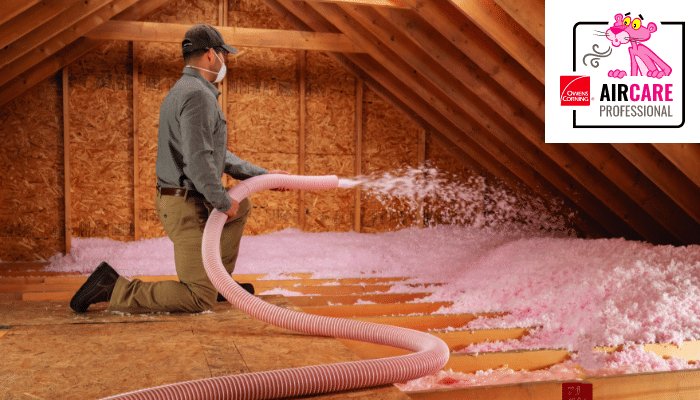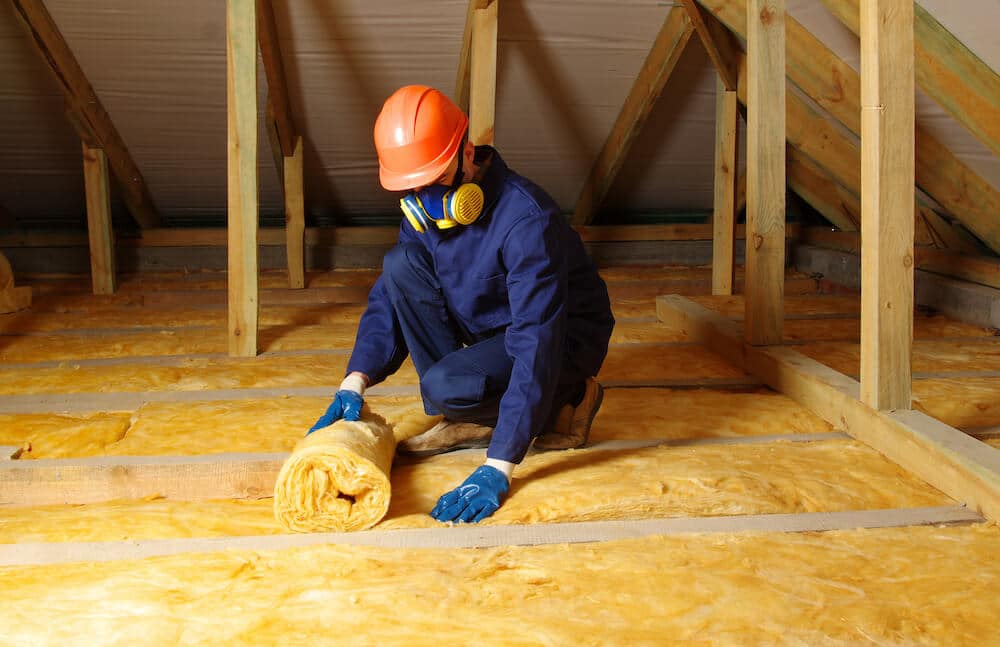Specialist Tips for Enhancing Your Home with Attic Insulation DFW
Specialist Tips for Enhancing Your Home with Attic Insulation DFW
Blog Article
Discover the Different Kinds Of Attic Insulation and Their One-of-a-kind Benefits for Your Home's Energy Effectiveness

Fiberglass Insulation
Fiberglass insulation is one of the most commonly utilized products for attic room insulation due to its exceptional thermal performance and cost-effectiveness. Made up of tiny glass fibers, this product efficiently traps air, creating an insulating barrier that aids maintain regular indoor temperatures. Its high R-value per inch makes it particularly effective at standing up to warm transfer, which is critical for energy conservation in homes.
Installment of fiberglass insulation is reasonably straightforward, often offered in batts or loose-fill kinds, fitting numerous attic room arrangements. Additionally, it is non-combustible and resistant to moisture, decreasing the risk of mold and mildew growth. This resilience adds to its durability, making fiberglass a practical long-term financial investment for home owners.
Furthermore, fiberglass insulation is usually produced from recycled materials, which enhances its eco-friendliness. The material can additionally contribute to soundproofing, minimizing sound transfer between areas. While it is important to wear protective equipment throughout installment to prevent irritability from the fibers, the general advantages of fiberglass insulation, including energy financial savings and environmental considerations, make it a preferred choice for improving attic performance and promoting a comfortable living atmosphere.
Spray Foam Insulation
Spray foam insulation is a highly reliable option for attic room insulation, understood for its exceptional air sealing and thermal efficiency. This ingenious insulation product is made up of a mix of isocyanate and polyol resin, which, when integrated, increases swiftly to fill up voids and tooth cavities in the attic room. Its capacity to follow numerous surface areas makes sure a continuous obstacle against air leaks, considerably lowering heat loss throughout colder months and heat gain during warmer seasons.
One of the key advantages of spray foam insulation is its high R-value per inch, which means it supplies excellent thermal resistance in a relatively slim application. This is particularly useful in attic rooms where room is usually minimal. Additionally, spray foam can help minimize moisture build-up, lowering the danger of mold and mold development, which can be damaging to both the structure and indoor air high quality.
While the first price of spray foam insulation may be greater than typical options, its long-term energy savings, coupled with enhanced comfort and boosted home worth, make it a rewarding financial investment for house owners looking for boosted energy efficiency. Attic Insulation DFW. Overall, spray foam insulation attracts attention as a reliable option for enhancing attic insulation
Cellulose Insulation

Cellulose insulation is a prominent option for attic room insulation, mainly composed of recycled paper products treated with fire resistants. This ecologically friendly alternative is understood for its exceptional thermal efficiency, effectively decreasing warmth transfer in both summertime and cold weather. The thick make-up of cellulose enables it to fill up spaces and voids in attic room spaces, supplying a seamless obstacle versus air leakages.
One of the significant benefits of cellulose insulation is its capability to resist mold and mildew and insects, owing to the fire resistant treatments made use of during production. Additionally, it flaunts a high R-value per inch, which translates into exceptional energy effectiveness. Home owners can anticipate reduced cooling and heating costs as an outcome of improved insulation.
Setup is usually completed with blowing loosened cellulose right into the wanted location, enabling for a quick and efficient process. This technique likewise minimizes disruption to the existing framework. Cellulose insulation has a reasonably reduced environmental impact, as its manufacturing process makes use of recycled products, contributing to sustainable building practices.
Rock Woollen Insulation
Amongst the different choices for attic insulation, rock wool, additionally understood as mineral wool, stands out because of its excellent thermal and acoustic efficiency. Made from natural or recycled products, rock wool is developed by melting rock and spinning it right into fibers, resulting in an item that offers exceptional insulation residential or commercial properties.
One of the significant advantages of rock woollen insulation is its high R-value, which shows its effectiveness in resisting warmth circulation. This characteristic not only improves power efficiency yet additionally adds to preserving a comfortable indoor temperature year-round. In addition, rock woollen is inherently fireproof, making it a more secure alternative for homes as it can stand up to high temperature levels without melting or releasing poisonous view publisher site fumes.
Furthermore, rock wool insulation succeeds in Learn More Here soundproofing capacities, efficiently decreasing noise transmission in between rooms and from outside sources. This makes it an optimal option for home owners looking for a relaxed living environment. Moreover, rock woollen is moisture-resistant, aiding to avoid mold growth and keeping the architectural honesty of the attic room. Generally, rock woollen insulation supplies a comprehensive service for improving energy effectiveness, safety, and comfort in domestic setups.
Radiant Obstacle Insulation
Glowing barrier insulation works as a reliable service for decreasing warmth transfer in attics, particularly in warmer environments. This kind of insulation works by mirroring induction heat far from living areas, thus minimizing the amount of warm that goes into a home throughout heat - Attic Insulation DFW. Normally made up of an extremely reflective product, such as light weight aluminum foil, glowing obstacles are mounted in attic rooms, dealing with the roofing system, where they can obstruct incoming warm from the sun
The key benefit of glowing barrier insulation is its ability to lower air conditioning prices. By showing heat as opposed to absorbing it, radiant barriers can help keep a more stable indoor temperature, reducing the workload on air conditioning systems. This efficiency translates into lower power expenses and raised convenience for homeowners.
In addition to power financial savings, glowing obstacles can additionally contribute to boosted indoor air high quality. By lowering heat buildup, they assist lessen moisture levels, which can prevent mold growth and enhance overall air circulation. When installed correctly, radiant barrier insulation can be an indispensable addition to any kind of energy-efficient home, making it a deserving factor to consider for home owners wanting to boost their attic insulation approach.
Verdict
Finally, recognizing the numerous kinds of attic insulation-- fiberglass, spray foam, Learn More Here cellulose, rock wool, and glowing barriers-- makes it possible for house owners to make educated decisions regarding energy performance. Each insulation kind provides one-of-a-kind benefits, such as exceptional thermal resistance, dampness management, and audio depletion. By choosing the suitable insulation product, considerable decreases in power expenses can be achieved, in addition to enhancements in interior convenience. Inevitably, the ideal selection adds to a much more sustainable living setting and advertises overall power conservation.

In conclusion, understanding the different kinds of attic insulation-- fiberglass, spray foam, cellulose, rock woollen, and radiant barriers-- allows property owners to make enlightened decisions relating to power effectiveness.
Report this page